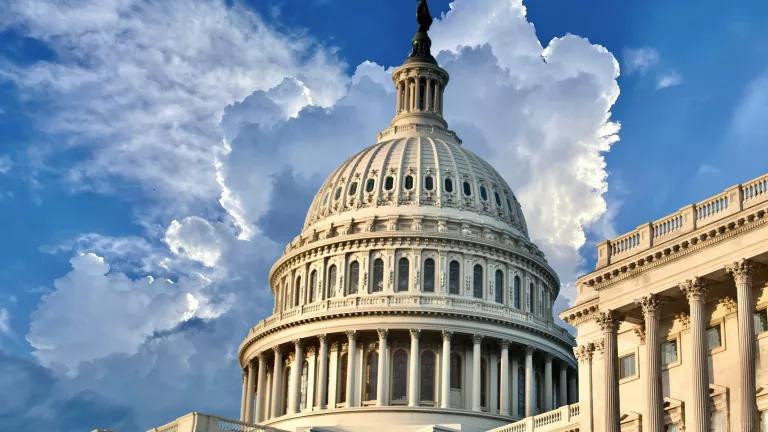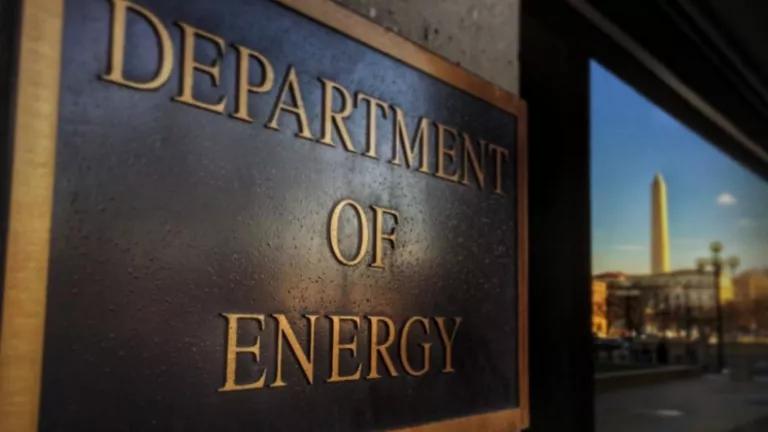RGGI States Can Create Benefits, Meet Climate Goals by Cutting Carbon Further, Faster Than EPA Requires

This post was co-authored with my colleague Bruce Ho.
Representatives from the nine states participating in the Regional Greenhouse Gas Initiative--Connecticut, Delaware, Maine, Maryland, Massachusetts, New Hampshire, New York, Rhode Island, and Vermont--meet on Tuesday in Wilmington, Delaware, to discuss the post-2020 future of this innovative program that substantially cuts carbon pollution from power plants while fostering billions of dollars' worth of economic and health benefits.
The RGGI states have been pioneers from the start--from the mid-2000s, when a bipartisan group of governors led by New York's George Pataki designed a program that would create new jobs, save consumers money on energy, and improve public health, all while cutting dangerous carbon pollution from the region's power plants. Now, it's time for these states to significantly up their game and bring more benefits to their residents by agreeing to cut even more pollution from power plants between 2020 and 2030. That will help the RGGI states meet their ambitious near- and long-term carbon reduction targets.
Specifically, in order to retain their status as national leaders on climate policy, the RGGI states must adopt a 2030 target that cuts carbon pollution further--and faster--than the U.S. Environmental Protection Agency (EPA) has required under the national Clean Power Plan to limit carbon emissions from power plants.
Doing so will keep the beneficial cycle of pollution reductions, economic benefits, and improved public health growing. As New York's Governor Andrew Cuomo has said, through RGGI, these states have "demonstrated that environmental progress can also bring economic prosperity."
Big benefits
Just how big are the benefits we're talking about? Well, as the RGGI states wrote to the EPA last week in comments on the Clean Power Plan: "The RGGI states have...experienc[ed] 8 percent GDP growth across the region while reducing power sector carbon pollution by more than 40 percent since 2005."
Here are some more details: Since the program went live in 2009, RGGI has created:
• More than 30,000 new job-years of work (a job-year is one year of full-time employment);
• Consumer energy-bill savings of more than $390 million to date; and
• More than $2.9 billion in total value to the states' economies.
All this while cutting climate-warming carbon pollution from its fleet of power plants by 40 percent below 2005 levels.
In addition, RGGI has created public health benefits valued at a whopping $11 billion. RGGI generated these health savings by simultaneously reducing other dangerous pollutants--sulfur dioxide, nitrogen oxides, particulate matter--that pour out of power-plant smokestacks along with carbon dioxide.
There are even more benefits to be had by ensuring the next phase of the program aligns with the states' long-term climate goals of achieving economy-wide carbon pollution reductions of 80 percent by 2050--the target scientists say we must reach to stave off climate change's worst effects.
RGGI at work
RGGI works by requiring power plants in the region to buy or trade allowances for every short ton of carbon dioxide pollution they emit into our already overloaded atmosphere. (Under the current program, the amount of emissions allowed decreases by 2.5% each year through 2020.) These allowance purchases generate revenue that states use to support consumer programs, with the vast majority going toward energy efficiency, including programs that help low-income households; renewable energy; direct bill assistance; and greenhouse gas abatement.
In Delaware, for instance, when the state wanted to jumpstart a transition in the building industry so that new homes would be more energy efficient, saving owners money and reducing carbon emissions, RGGI funding was their ace in the hole. Through its Green for Green program, Delaware incentivized builders to build more energy efficient homes and buyers to buy them. Now, even without incentives, the builders who've participated in the program are building homes that are more energy efficient than local building codes require. "More people are coming to these builders because they build green," explains Kim Ferrell, who administers Green for Green for the Home Builders Association of Delaware. "If you're going to buy something new, you want something where the energy bills aren't sky high and you've got cleaner air."
You can find success stories like these across the RGGI region. In New York's Hudson Valley, RGGI funds help homeowners, businesses, and farmers save money on pollution-free solar energy while creating good-paying local jobs for installers and designers, office workers, marketers, truck drivers, and accountants. In Gloucester, Massachusetts, RGGI funds supported energy upgrades that save schools money they can use to educate kids and retrofitted streetlights with LED bulbs that save taxpayer cash. In Linthicum Heights, Maryland, RGGI-funded energy efficiency measures are helping the Hilton Hotel save an estimated $158,400 a year. And in Connecticut, RGGI funds have underwritten the state's innovative Green Bank, which uses public funds to leverage private lending in an effort to bring clean energy to scale.
Numbers-wise, here are the RGGI benefits by state:
• Connecticut--2,172 job-years added, $245.2 million in value added to the state's economy, and health savings worth $13.3 million
• Delaware--1,487 job-years, $170.3 million in economic value, $570.2 million in health savings
• Maine--2,031 job-years, $214.3 million in economic value, $4.5 million in health savings
• Maryland--3,845 job-years, $340.8 million in economic value, $6.2 billion in health savings
• Massachusetts--6,509 job-years, $741.3 million in economic value, $1.1 billion in health savings
• New Hampshire--1,041 job-years, $84.3 million in economic value, $1.1 billion in health savings
• New York--9,083 job-years, $711.5 million in economic value, $1.1 billion in health savings. (New York has calculated consumer energy-bill savings at $58.5 million so far.)
• Rhode Island--762 job-years, $85.6 million in economic value, $162,621 in health savings
• Vermont--372 job-years, $36.8 million in economic value.
By continuing to lower the amount of carbon that power plants can produce year-over-year between 2020 and 2030, the RGGI states can reach their pivotally important climate goals, lead the nation by going beyond Clean Power Plan requirements for carbon reductions--states need to submit initial state plans to the EPA in September--and bring a slew of additional benefits to their residents. With a stronger RGGI, everybody wins.
(A special thanks to the Acadia Center for crunching the health numbers. State-by-state numbers for jobs and economic value come from these two reports by the Analysis Group.)
Map courtesy of the Center for Climate and Energy Solutions.




